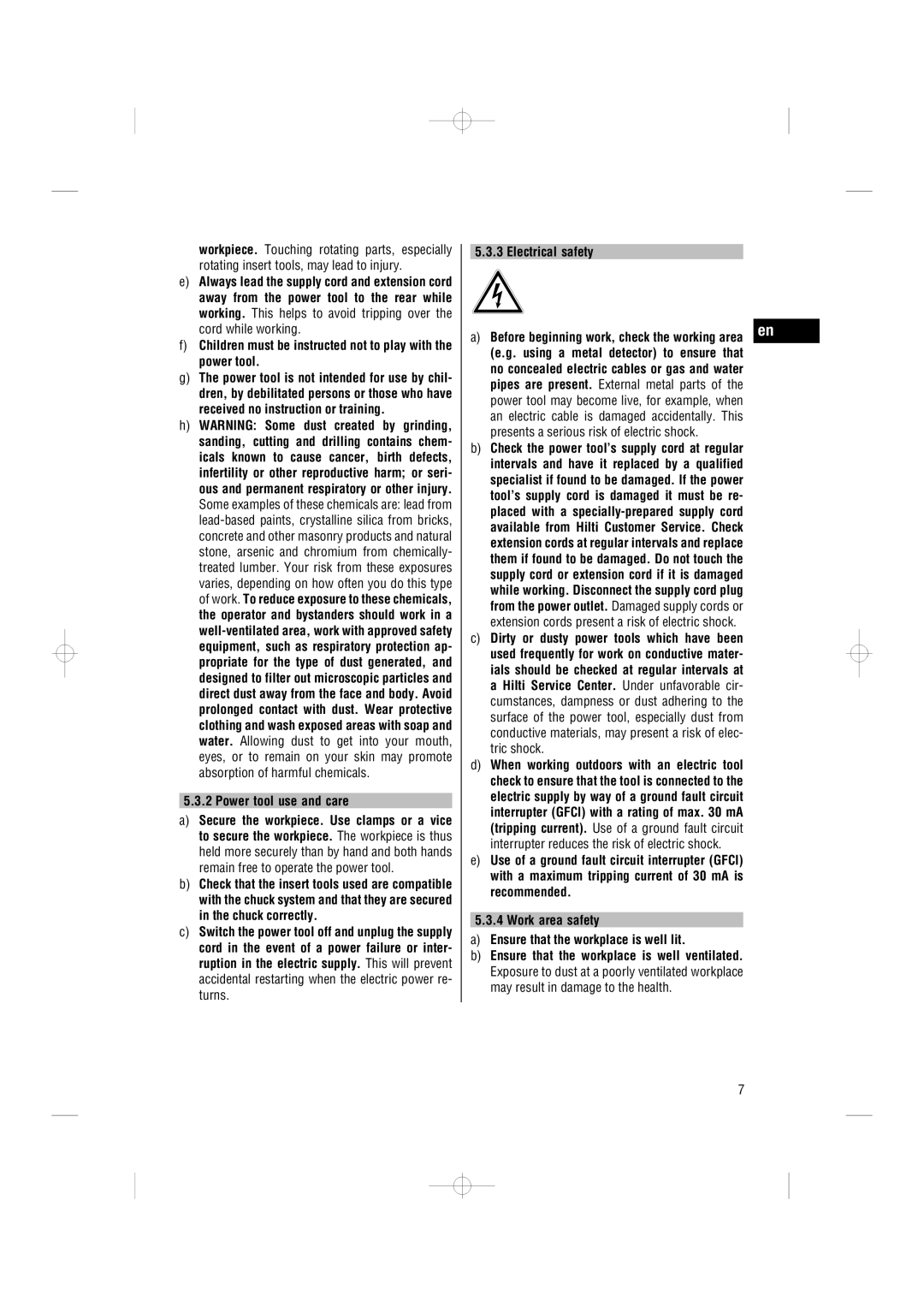
workpiece. Touching rotating parts, especially rotating insert tools, may lead to injury.
e)Always lead the supply cord and extension cord away from the power tool to the rear while working. This helps to avoid tripping over the cord while working.
f)Children must be instructed not to play with the power tool.
g)The power tool is not intended for use by chil- dren, by debilitated persons or those who have received no instruction or training.
h)WARNING: Some dust created by grinding, sanding, cutting and drilling contains chem- icals known to cause cancer, birth defects, infertility or other reproductive harm; or seri- ous and permanent respiratory or other injury. Some examples of these chemicals are: lead from
5.3.2Power tool use and care
a)Secure the workpiece. Use clamps or a vice to secure the workpiece. The workpiece is thus held more securely than by hand and both hands remain free to operate the power tool.
b)Check that the insert tools used are compatible with the chuck system and that they are secured in the chuck correctly.
c)Switch the power tool off and unplug the supply cord in the event of a power failure or inter- ruption in the electric supply. This will prevent accidental restarting when the electric power re- turns.
5.3.3Electrical safety
a)Before beginning work, check the working area (e.g. using a metal detector) to ensure that no concealed electric cables or gas and water pipes are present. External metal parts of the power tool may become live, for example, when an electric cable is damaged accidentally. This presents a serious risk of electric shock.
b)Check the power tool’s supply cord at regular intervals and have it replaced by a qualified specialist if found to be damaged. If the power tool’s supply cord is damaged it must be re- placed with a
c)Dirty or dusty power tools which have been used frequently for work on conductive mater- ials should be checked at regular intervals at a Hilti Service Center. Under unfavorable cir- cumstances, dampness or dust adhering to the surface of the power tool, especially dust from conductive materials, may present a risk of elec- tric shock.
d)When working outdoors with an electric tool check to ensure that the tool is connected to the electric supply by way of a ground fault circuit interrupter (GFCI) with a rating of max. 30 mA (tripping current). Use of a ground fault circuit interrupter reduces the risk of electric shock.
e)Use of a ground fault circuit interrupter (GFCI) with a maximum tripping current of 30 mA is recommended.
5.3.4Work area safety
a)Ensure that the workplace is well lit.
b)Ensure that the workplace is well ventilated. Exposure to dust at a poorly ventilated workplace may result in damage to the health.
en
7
